Project Description
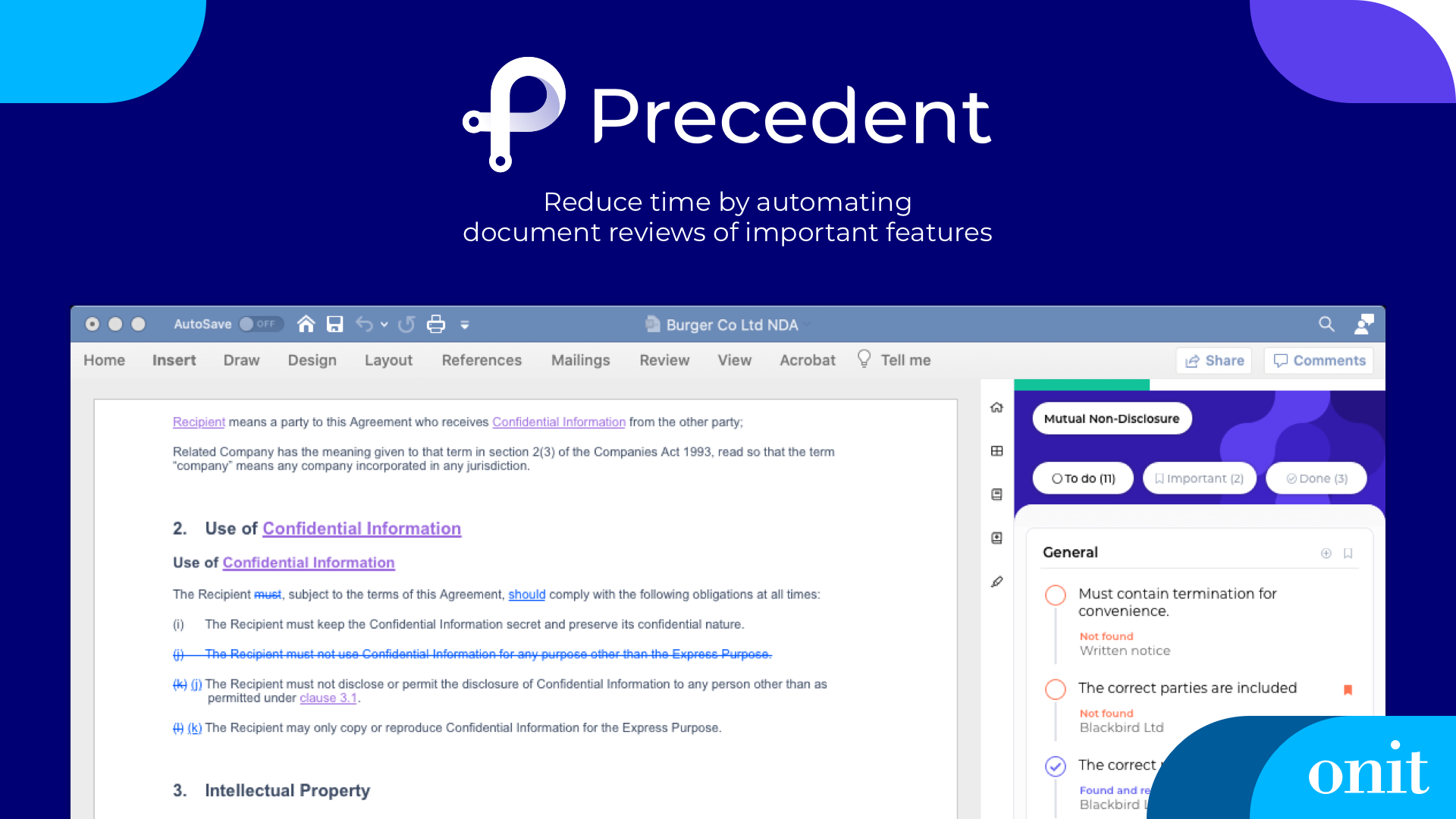
Precedent ReviewAI is part of the legal review product suite by software developer McCarthyFinch/Onit. It’s an advanced legal AI Word Add-in that reads, writes and reasons and provides advice like a lawyer.
Industry: Legal Software Development
Product team: Myself on UX/UI + Graphic Design, 1 x Legal Tech, 1 x Product Owner, 1x Product Designer
What was developed
Precedent ReviewAI is a Microsoft Word Add-in that was developed to assist both business users and lawyers with reviewing legal contracts.
ReviewAI creates automated checklists that guide users through the key commercial issues they need to address in any contract, while helping them find relevant content.
ReviewAI checklists allow expert users to quickly and efficiently identify key commercial issues, automates simple content editing, and provides advisory features for less experienced users.
Over the course of the app’s development, I was responsible in tandem with our product team for developing the app concept, identifying key user concerns, workflows, and personas.
I was also responsible for wireframing, prototyping, user testing, and taking the app to the final product. Inclusive of this was the development of a full support portal with documentation and user tutorials.
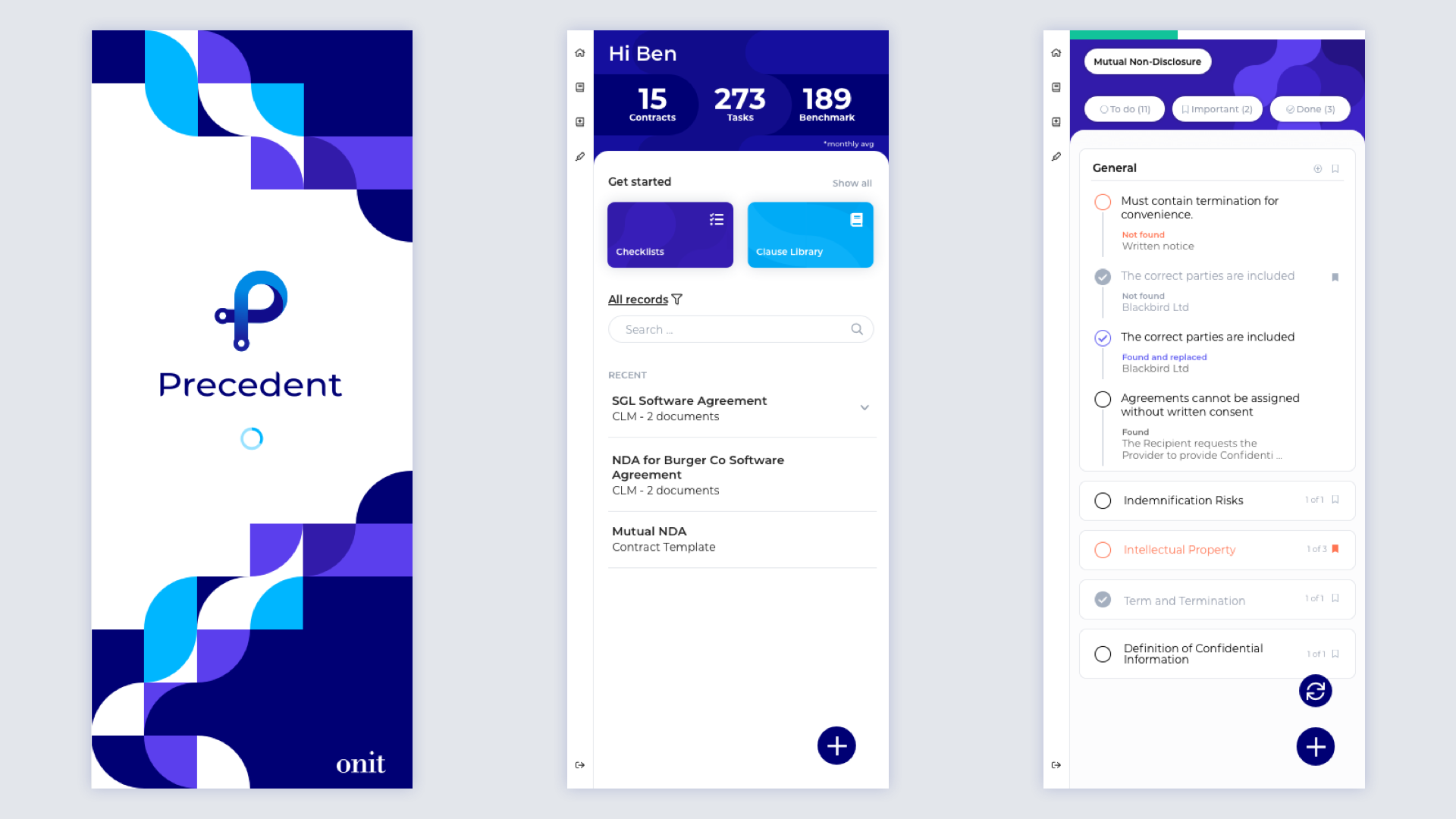
The problem being solved
Precedent ReviewAI is an evolution of two previous contract review products authorDOCS and authorAPPROVE.
authorDOCS was developed to help legal professionals find contract content while reviewing documents. authorAPPROVE was designed to automate reviewing and editing contracts for business users for faster contract approvals.
Precedent ReviewAI came about due to a need amongst mid to expert legal users to have their document reviews automated, have easy to work through checklists, and access to advice.
This app solves the problem of having access to expert advice, guided semi-automated review, and compliance with company standards in a collaborative environment.
The issue of daily retention
One of the interesting problems we were trying to solve with ReviewAI was the lack of daily ‘stickiness’ or daily user retention our other products have. In general legal documents only require review by any given user a handful of times over the course of a month.
In creating checklist reviews we also created the ability to create blank AI-free checklists, the ability to add “jumpable” document references to any checklist item and share any checklist with another user. In doing this we generated a lot of excitement from users that would happily use these features outside of legal review.
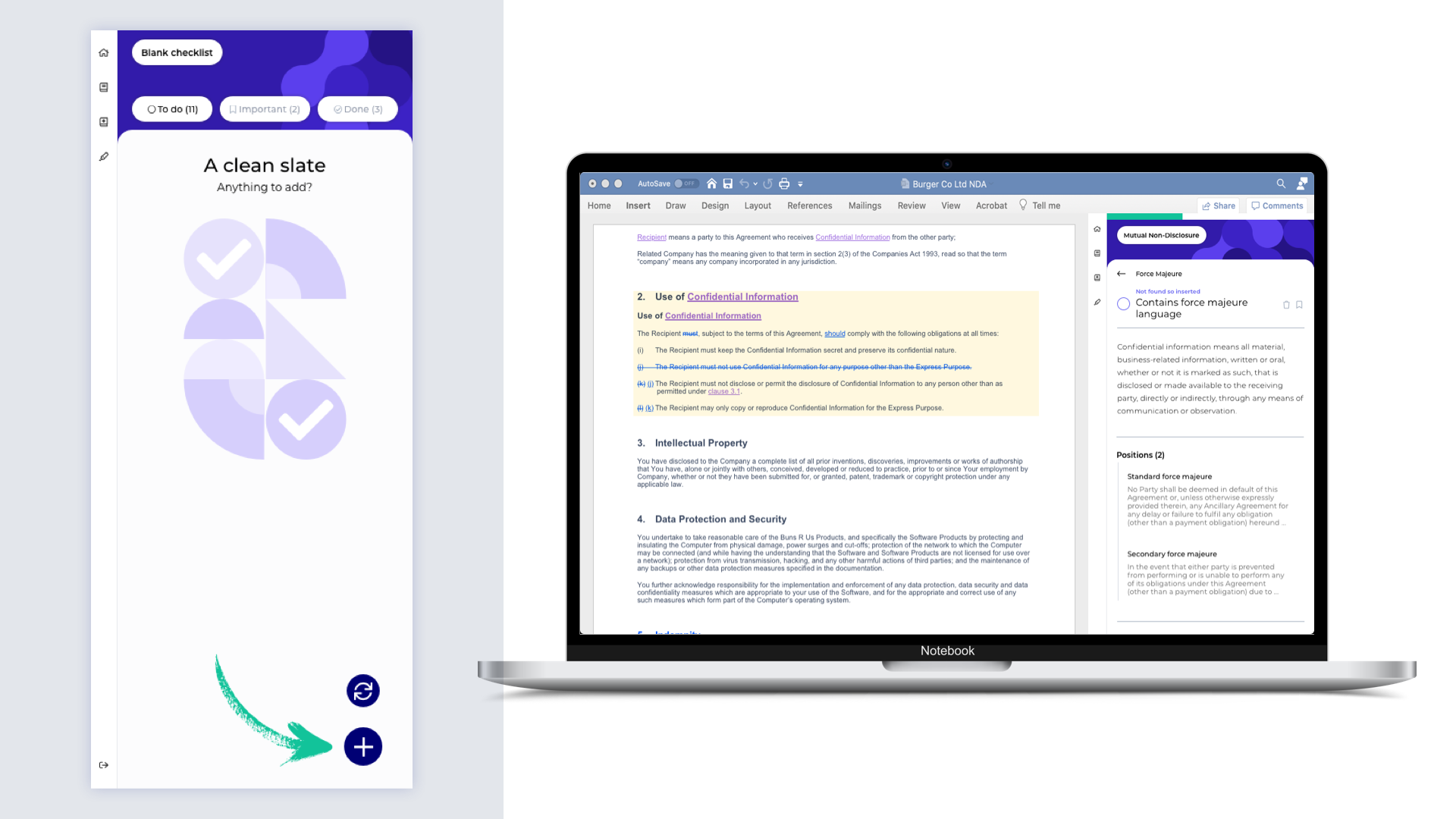
UX research + artifacts
UX was an extremely important part of the development process in order to ensure the adoption of the product.
To aid this the product team and I:
- Interviewed business users and lawyers across firms and in-house to understand common practices and workflows
- Developed a range of user stories and use cases
- Developed user personas
- Performed competitive analysis of other products in the market
- User tested and iterated with clickable prototypes developed in InVision
As of this writing, the app has only just gone live and so we have yet to perform extensive studies or post-release testing however early beta usage suggests strong adoption.
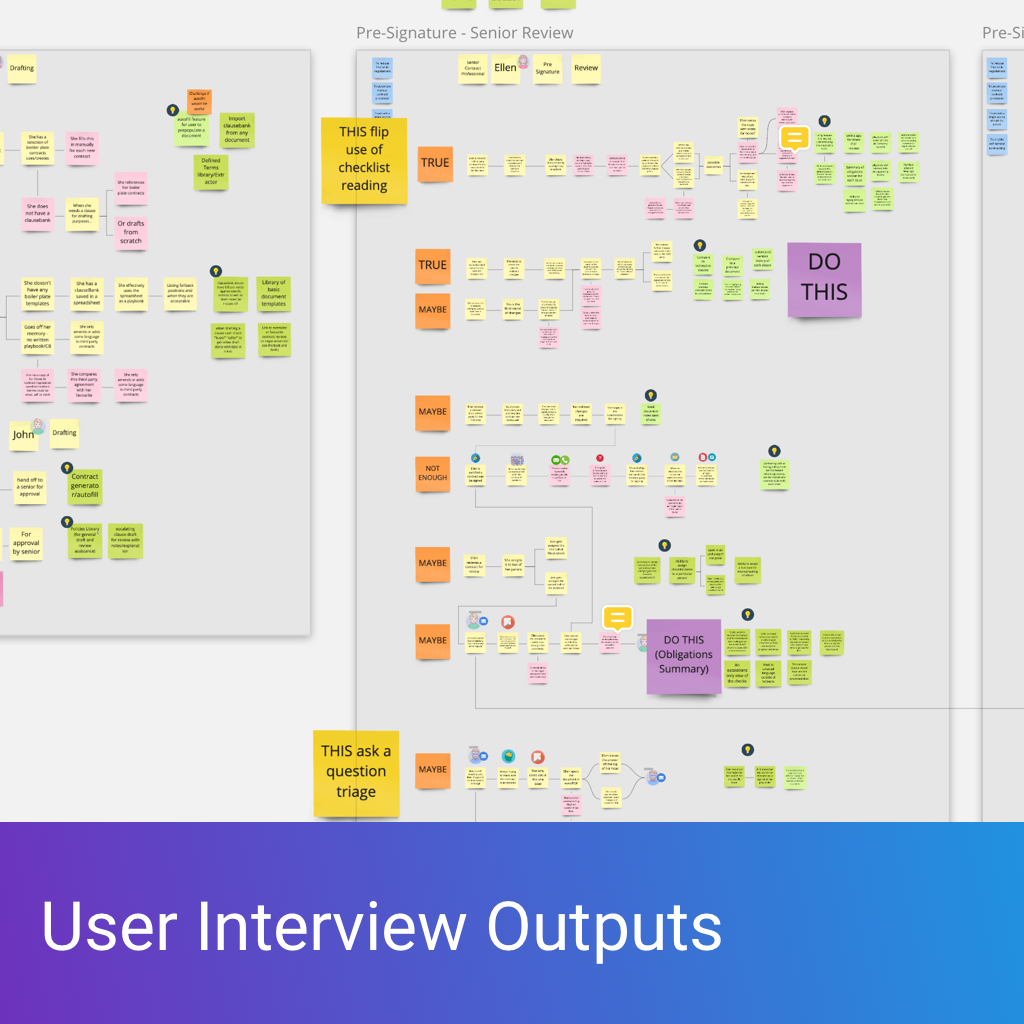
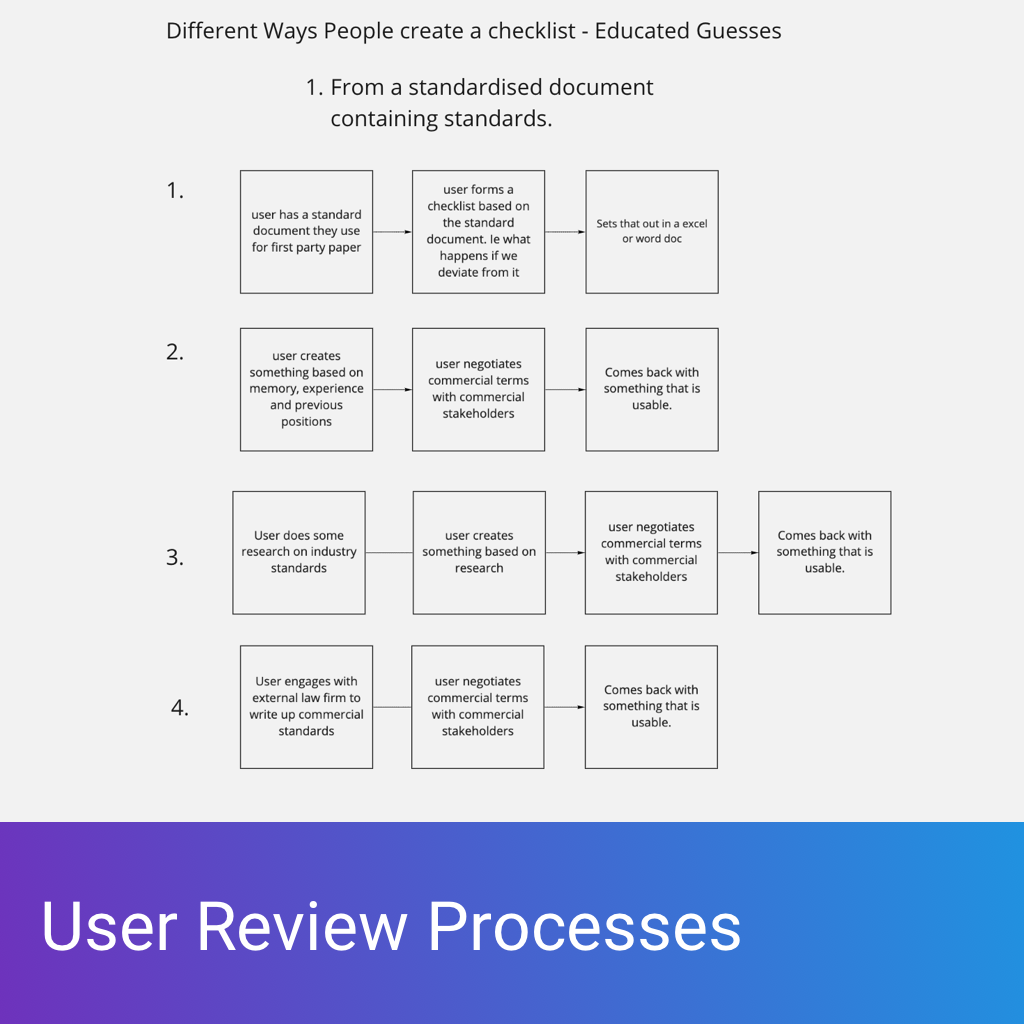
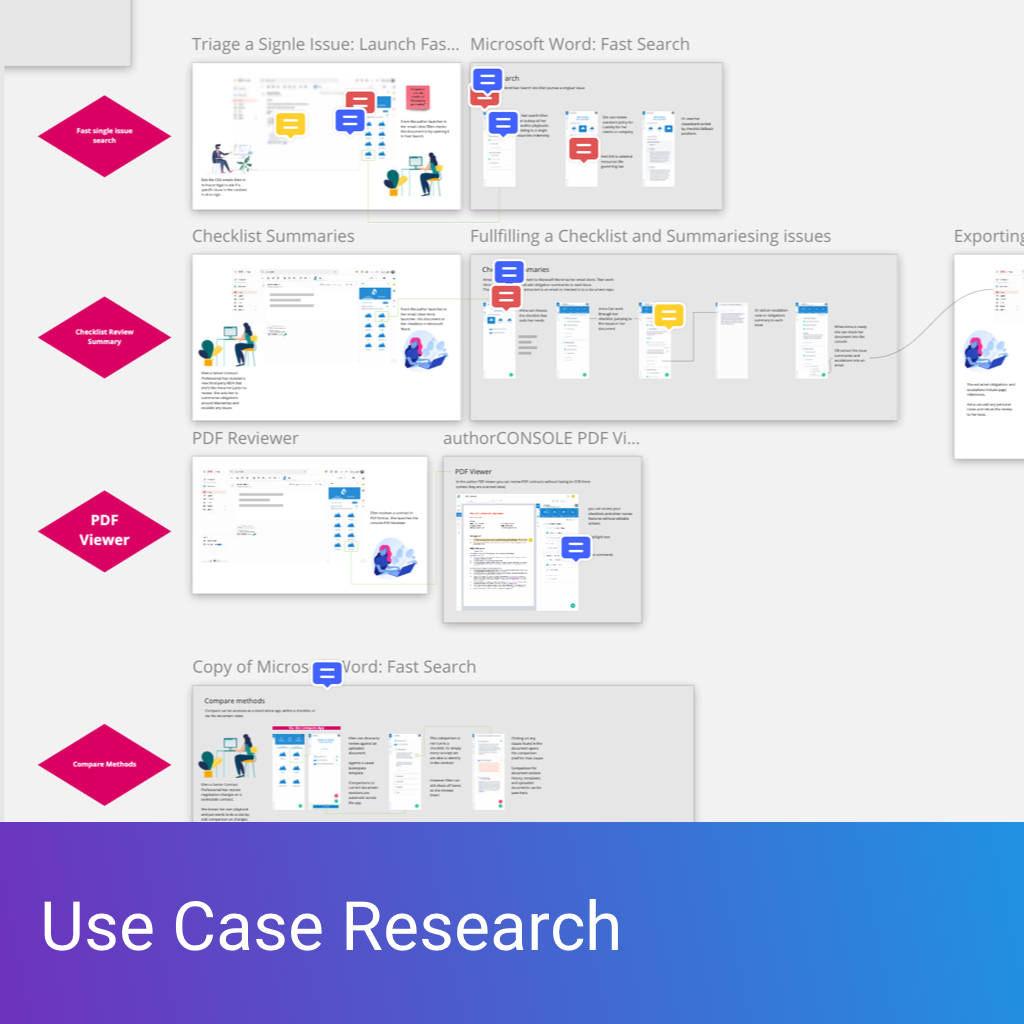

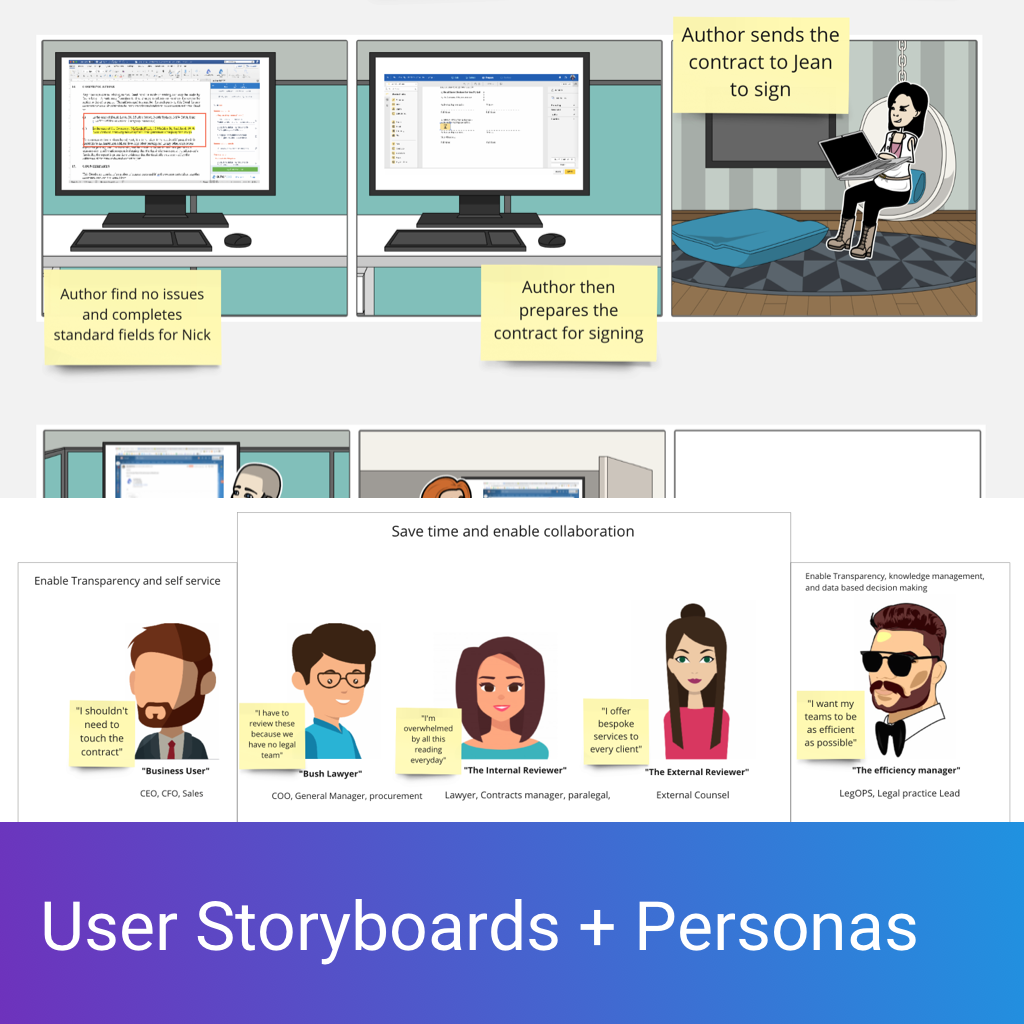
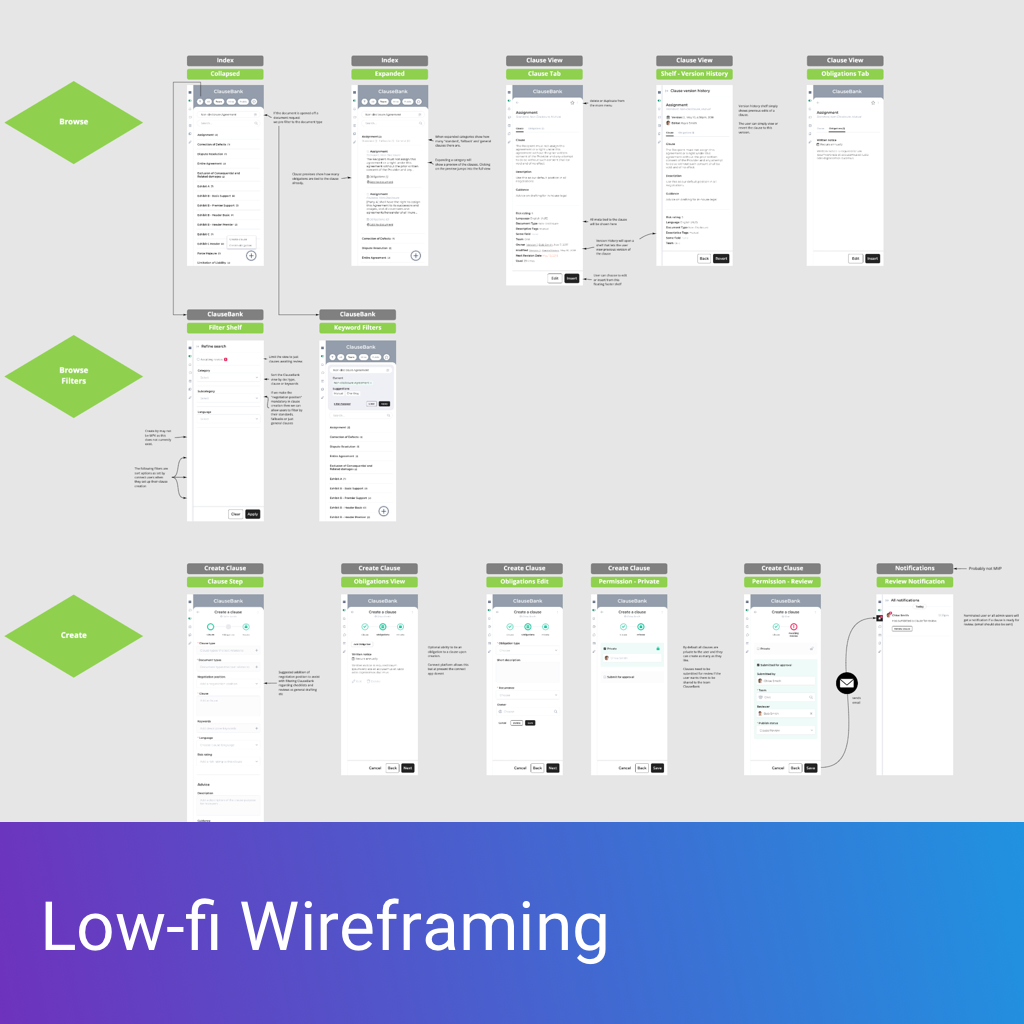
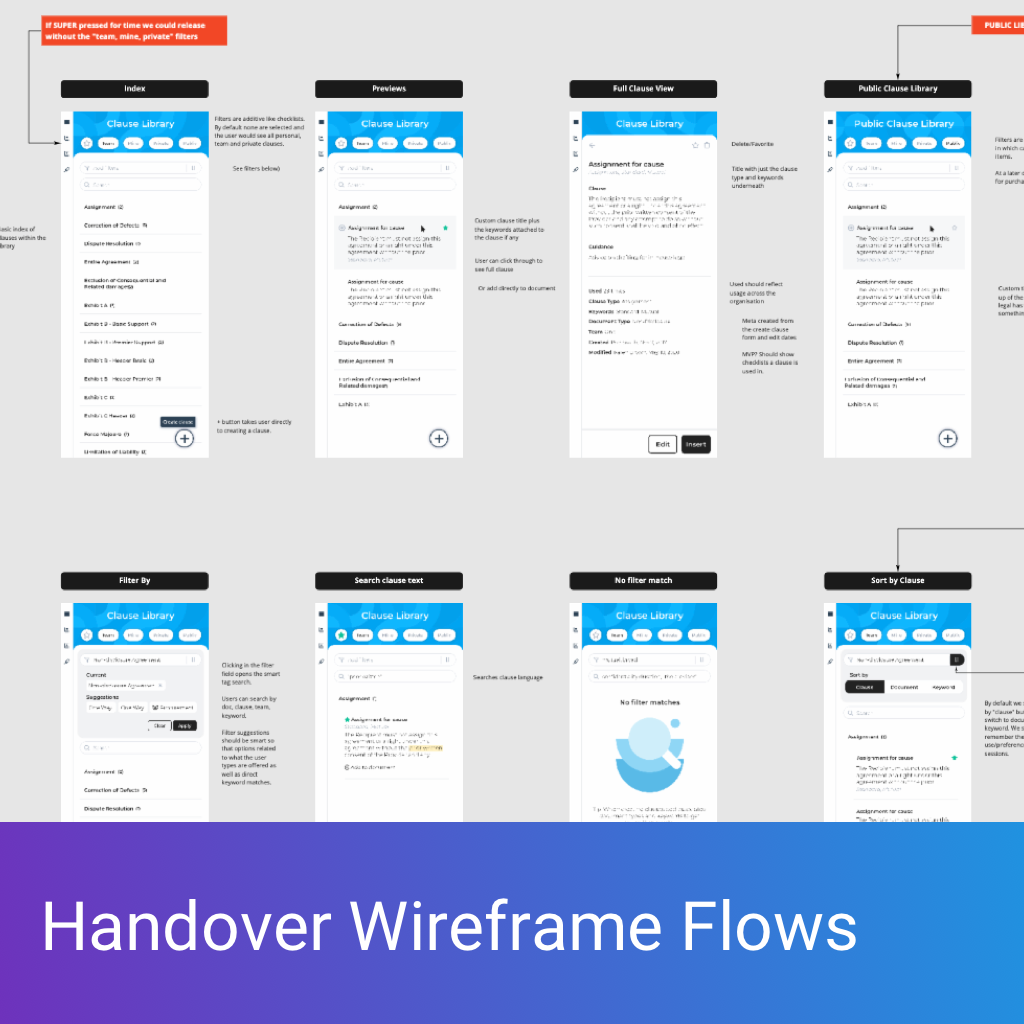
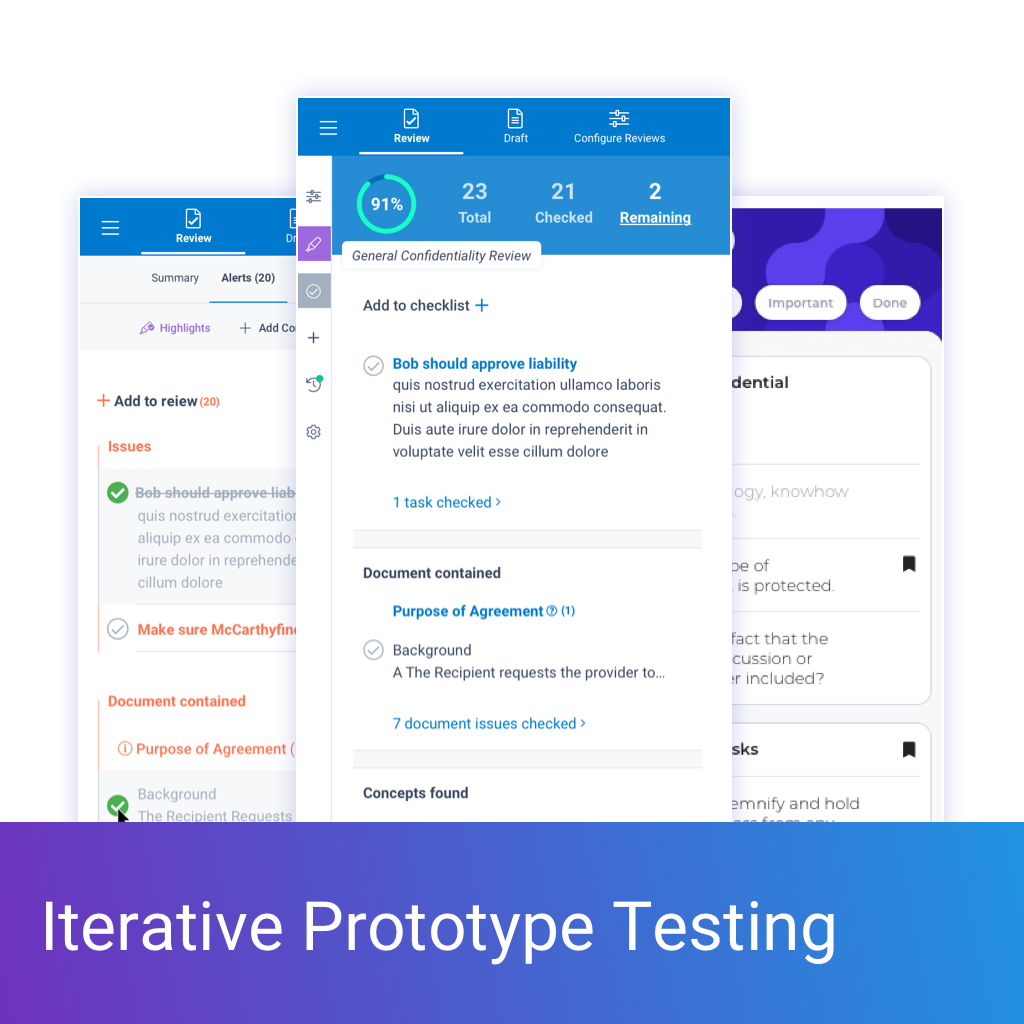
Designing for trust
In the legal industry adoption of technology has been slow. The legal ramifications of providing incorrect advice are huge. Trust thresholds that legal technology will provide the correct advice, in an open and easy to explain fashion is low.
This means that any technology needs to be an open box with easy to explain reasoning. It also means that most users do not have a high comfort level with software usage.
With Precedent ReviewAI we allowed legal teams to build the rules for their document reviews in an online console. Allowing them full control over what was looked for and why, and what advice was offered in any type of document review.
We also worked to make AI corrections simple and easy to perform. Mindful that incorrectly identified or missing document content must be as easy to correct as tagging a friend in Facebook. Anything more than one or two clicks to correct, removes user willingness to participate, and negatively impacts the user’s perception of the product’s accuracy.
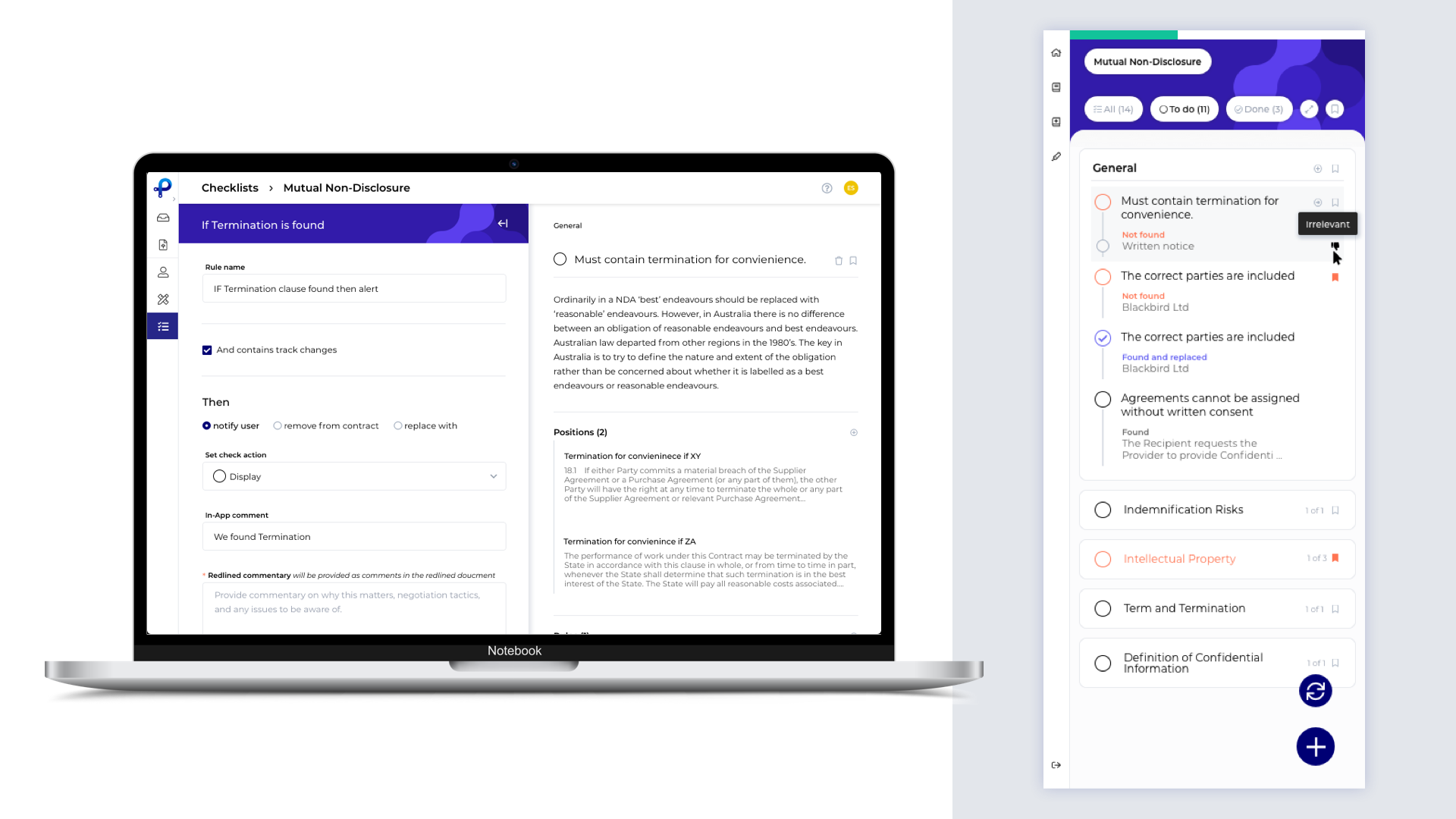
Conclusion
One of the biggest takeaways with the research and development of this app has been to focus outside of what Artificial Intelligence can provide to document review. Within the legal industry in general there is a race to provide the ‘smartest’ AI solutions with a heavy focus on what can be extracted from a document and a very poor focus on user retention and UX outside of what the AI provides.
While we’ve developed valuable and adopted applications that have been picked up across Fortune 500 companies we too are guilty of forgetting to focus on user needs. Precedent ReviewAI is representative of a major reset and focuses on user needs and behaviours in order to deliver a product that delights both with and without AI.


